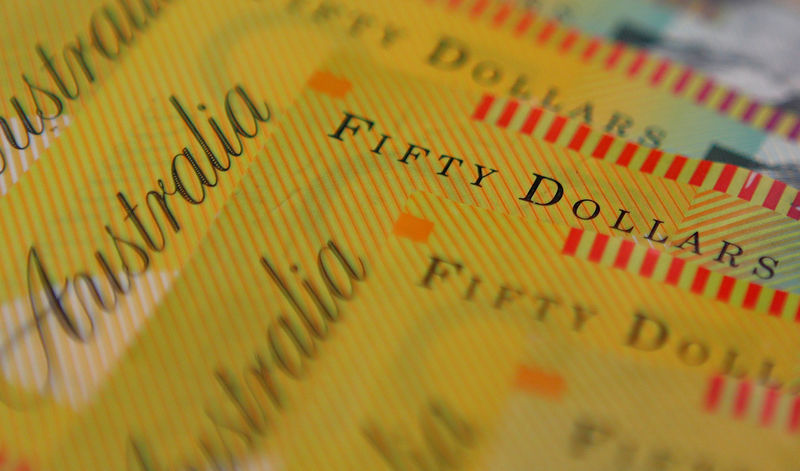 © Reuters. FILE PHOTO: Illustration photo of Australian dollars
© Reuters. FILE PHOTO: Illustration photo of Australian dollarsSYDNEY (Reuters) – Australia’s central bank mapped out a steady course for rates at its first meeting of 2018 this month, and indicated a pick-up in wage growth was necessary to ensure a much-needed recovery in inflation. Minutes of the Reserve Bank of Australia’s (RBA) January meeting showed policy makers had become more confident about the domestic outlook, thanks in part to a synchronised upturn in the global economy.
However they needed to balance anaemic inflation and slow income growth against high household debt, meaning interest rates were set to be at record lows for a while yet.The RBA has left rates at 1.50 percent since August 2016, the longest spell of stable policy since the early 1990s. That had helped in reducing the unemployment rate to 5.5 percent and bringing inflation closer to its 2-3 percent target band, minutes of the meeting showed.
“Further progress on these goals was expected over the period ahead but the increase in inflation was likely to occur only gradually as the economy strengthened,” the RBA said.“There was still a risk that growth in consumption might turn out to be weaker than forecast if household income growth were to increase by less than expected.” A major source of uncertainty is around consumer spending, which has been under pressure from record-high household debt and sluggish wage growth. Just last week, RBA Governor Philip Lowe said he would like to see annual wage growth accelerate to around 3.5 percent, from the current 2 percent. That seems difficult though as many firms remain reluctant to pay more, in part because they cannot raise prices. As a result, recent wage deals across sectors, known as enterprise agreements, paid smaller increases than the ones they replaced, an unwelcome trend highlighted by RBA Assistant Governor Luci Ellis this month.
But there were also reasons for cheer.Data out last week showed Australia’s streak of employment gains reached the longest on record in January, while unemployment fell a tick to 5.5 percent. Figures on retail sales also suggested that the weakness in household consumption seen since early-2017 had not continued into the December quarter.In addition, government spending on public infrastructure had boosted non-mining business investment and was likely to support economic growth for some time.As a result, the RBA forecast gross domestic product (GDP) growth to average “a bit above 3 percent” over the next couple of years.
Still, Lowe is in no hurry to put up rates, recently saying the board saw no “strong case” for a move.The RBA has now spent more than seven years without hiking, the longest span since the official cash rate was introduced in 1990. Futures markets imply this period of stability will likely last for another year.
The RBA cautioned that a rising Australian dollar could also result in a slower-pick in economic activity and inflation.
(Reporting Wayne Cole and Swati Pandey)
Fusion Media or anyone involved with Fusion Media will not accept any liability for loss or damage as a result of reliance on the information including data, quotes, charts and buy/sell signals contained within this website. Please be fully informed regarding the risks and costs associated with trading the financial markets, it is one of the riskiest investment forms possible.
Source: Investing.com




























